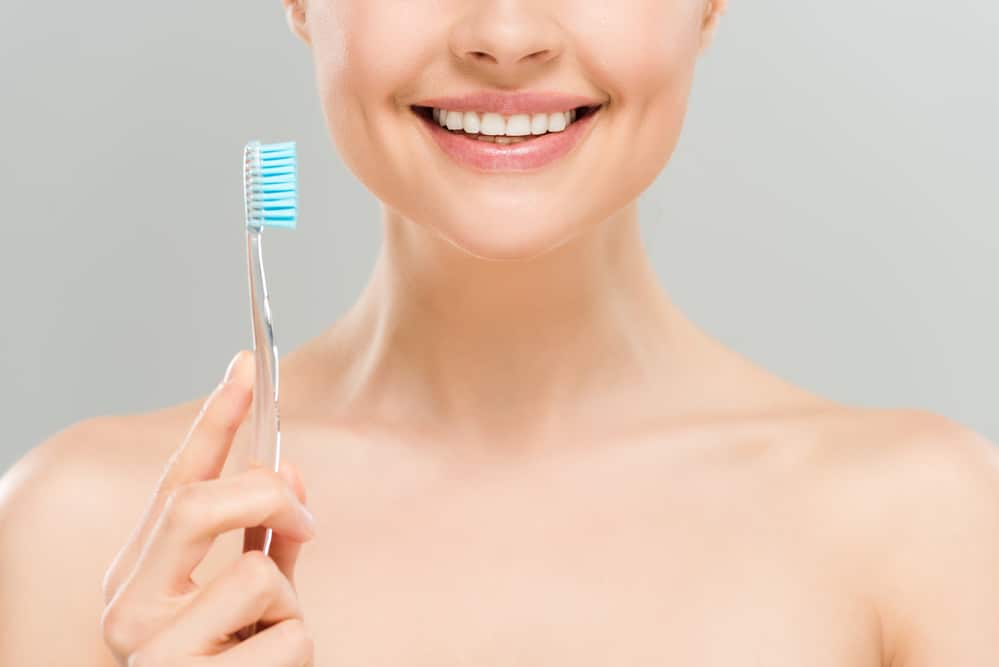Our teeth tell tales about the lives we’ve lived and the habits we keep.
From coffee stains to chips and cracks, your pearly whites hold clues to your personal story. Even if your smile has seen better days, don’t worry – with the right care, you can get it back on track to health and happiness.
Ahead we’ll explore what your teeth might be trying to tell you and provide tips to restore your smile’s natural beauty.
Reading Between the Lines: What’s Your Smile Saying?

Stains and Discoloration – What’s Your Drink of Choice?
If your teeth are stained or discolored, your favorite food and drinks may be to blame. Coffee, tea, red wine, berries, beets and soda can all leave their mark if consumed too often. Smoking also causes stubborn stains that can discolor enamel.
The good news? Many stains can be removed with professional whitening treatments or over-the-counter whitening products. Just be aware of what’s causing the stains in the first place. Your smile’s hue highlights the flavors you savor.
Some common culprits for tooth stains include:
Coffee – The dark color of coffee can embed deep into the microscopic ridges and grooves of your enamel over time, giving your teeth a yellowish or brownish tint. Try rinsing with water after your morning cup of java.
Tea – Black teas in particular contain pigments that can cause stubborn staining of teeth. Switch to herbal teas more often for a lighter look.
Red Wine – The deep red anthocyanins in wine stick to enamel, leaving greyish or purple stains. Enjoy your glass of red, but follow up with water.
Berries – Blueberries, raspberries, blackberries – they’re all nutritional powerhouses but the pigments can discolor teeth. Good oral hygiene minimizes staining.
Soda – Colas and other dark sodas contain coloring agents that can leave teeth looking dingy. Cut back on soda altogether for better dental health.
Tobacco – Nicotine and tar in tobacco products can leave brown stains plus irritate gums. Consider kicking the habit for whiter teeth.
Chips and Cracks – Living Life to the Fullest?
Chipped or cracked teeth are often signs of a life well-lived. Each notch could represent an adventure – an enthusiastic bite of an apple, an accidental fall during a sporting match, or grinding your teeth at nighttime.
While chips and cracks add character, they also make teeth more vulnerable. Be careful biting into hard foods and using your teeth as tools. See your dentist promptly if you notice any cracks or damage. They can assess the situation and restore your smile’s strength.
Some ways chips and cracks occur include:
Hard foods – Biting into crunchy apples, nuts, seeds, popcorn kernels or hard candies can crack fragile enamel. Take care when snacking.
Sports injuries – An elbow to the mouth during basketball, a puck to the teeth in hockey, a stray ball on the baseball field – accidents happen. Wear a mouthguard when possible.
Grinding/Clenching – whether from stress or sleep bruxism, constantly grinding your teeth wears down enamel. See your dentist about night guards or stress relief.
Tooth decay – Untreated cavities weaken tooth structure, making cracks and fractures more likely. Stay on top of dental checkups.
Age-related wear – As we age, enamel naturally thins, increasing vulnerability to chipping and cracking. Extra caution helps preserve your mature smile.

Sensitivity – Possible Reasons for Discomfort
If you experience pain or sensitivity when eating hot, cold, or sweet foods, it may indicate issues like cavities, receding gums, or exposed tooth roots. Don’t ignore these warning signs – see your dentist to uncover the cause and prevent further complications like infections or nerve damage.
Prompt professional care for sensitivity not only eases discomfort but protects your long-term dental health. Listen when your teeth are trying to tell you something!
Some common causes of dental sensitivity include:
Receding Gums – When gums recede, the sensitive root surface underneath becomes exposed. Gum recession can stem from periodontal disease but also overly vigorous brushing.
Tooth Decay – Cavities form through weakened areas in enamel, allowing hot/cold sensitivity. Early decay is reversible with fluoride treatments.
Cracked Teeth – Fractures in enamel expose the inner dentin and nerves, making teeth painfully sensitive. Cracks require restoration.
Worn Tooth Enamel – Over time, thin enamel leads to sensitivity. Those with acid reflux or eating disorders are at higher risk of erosion.
Tooth Grinding – Chronic grinding or clenching wears down enamel and exposes sensitivity. Night guards cushion the force.
Recent Dental Work – Procedures like root planing, tooth extractions, or fillings can cause temporary sensitivity as teeth heal.

Reclaiming Your Smile’s Natural Radiance
Daily Habits – Prevention is Power
Want to safeguard your smile? Make brushing, flossing, and checkups part of your daily routine.
Aim to brush thoroughly twice a day and floss once daily to banish plaque and bacteria. Regular dental cleanings remove stubborn tartar and provide a chance for personalized advice.
Stay hydrated by drinking plenty of water, which washes away particles and bacteria while promoting healthy saliva flow. Establish these simple habits, and you’ll be well on your way to a glowing grin!
Diet – Eat Your Way to Healthier Teeth
You truly are what you eat when it comes to oral health. Choose ‘tooth-friendly’ foods like dairy, nuts, lean protein, crunchy fruits, and veggies. They provide enamel-strengthening vitamins and minerals plus a natural cleaning effect.
Limit sugary or acidic foods and drinks, which can erode tooth enamel over time. If you occasionally indulge in something sweet, swish with water and chew sugar-free gum after to wash away residue.
Professional Care – Don’t Go It Alone
Daily home care lays a healthy foundation, but your dentist’s expertise is invaluable for catching issues early and restoring your smile’s luster. Make regular checkups and cleanings part of your oral health plan.
If you require extensive treatment, an orthodontist can provide specialized care using advanced techniques. With professional guidance, your smile can progress to its fullest potential.
Take Control of Your Smile’s Story
Your teeth tell a unique tale, but you get to write the ending. Heed their hints, establish healthy habits, and don’t hesitate to seek professional care. With the right lifestyle choices and commitment to prevention, you can ensure your smile’s story has a beautiful conclusion – radiant health and confidence!
The journey begins with one step – call your dentist today to schedule an appointment. They’ll help assess your smile’s current state and collaborate with you to get it beaming brighter than ever before!
Remember, a glowing smile is about more than just aesthetics – it’s an asset to your overall health and quality of life. Make oral wellness a priority, and your teeth will reward you in comfort, function and beautiful appearance for years to come. It’s never too late to bring out the best in your smile!




